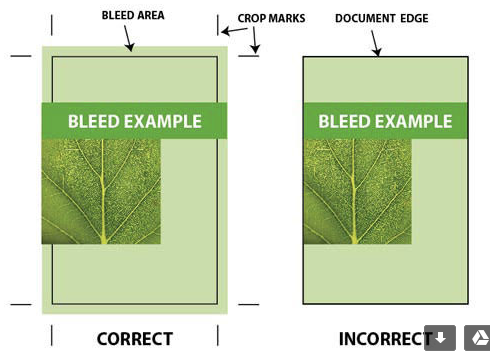“Prepress” is a print industry term that’s used to describe the process of preparing digital files so that they are ready for print. A little effort helps saves time, money, and ensures that the final product comes out looking exactly as you want it.
Over the years, we’ve encountered many common prepress issues that seem to arise time and time again. We want to take this opportunity to show you how to prepare your digital files so that they are press-ready and will produce a high-quality final product.
Prooffread
There are two different types of proofreading: linguistic and prepress. Linguistic deals with common grammar issues, spelling, typos, and the tone of the copy.
Prepress proofreading deals with the visual aspect and how it appears on paper.
Certain things like text spacing, lengths of lines, and splitting words at the end of line breaks can cause the text to look weird. The overall goal of prepress proofreading is to ensure uniformity of the text from an overall visual perspective.
If you’re unsure as to whether or not your text will look good, you can
send us your file via our website. One of our printing experts will get back to you shortly. Or if you’re in a rush, you can upload the file via that page and then give us a call.
Resolution and Image Size
Before you send in your file for printing, look at the resolution of the pictures as well as the overall file itself. 300 DPI is the bare minimum image and file resolution that you should use. However, a good rule of thumb is to save your images and files in as high of resolution as possible.
You shouldn’t enlarge images more than 20% of their original file size. It’s often best to use a very high-resolution image and then scale down as needed. While you can take pixels away, it’s impossible to add them to increase the overall resolution.
RGB vs. CMYK
The colors you see on your computer monitor can vary significantly from what’s printed out on paper. Most computer software design programs use an RGB model whereas printers us a CMYK one. RGB stands for: red, green, blue. CMYK stands for: cyan, magenta, yellow, and black.
While the differences between RGB and CMYK could take up an entire blog post, the primary takeaway is that if your designs and files are using the RGB format, the printed collateral will not look the same due to the printers using a CMYK format. Try to make sure that the color scheme you’re using on your design software is CMYK, not RGB.
Bleed, Crop, and Slug
It’s very challenging, if not outright impossible for a printer to print to the very edge of a paper. This is why graphic designers leave a little bit of whitespace left around the top, bottom, left, and right of a design. This is called the bleed. Once the file is printed, the extra bleed will be cut away, leaving a perfectly printed image or text.

Generally speaking, bleeds are usually 1/8th of an inch from the edge of the paper to where it’s to be cut. If you’re unsure about the bleed, you can visit the
send us your file page on our website to see a graphic example.
Crop marks are short lines that indicate where the printers should cut. The slug is the white space just outside of the design. This is where additional printing information, instructions, or other essential job details go. It will not appear in the final printing as it’s just there for informational purposes only.
Choose the Right Paper
The paper that you choose to print on can significantly affect the overall outcome of the final product. For example, a high gloss paper is going to cause the design to look a lot different from a matte or low gloss paper. The paperweight refers to the thickness of the paper, and that too can affect the printed material.
If you’re unsure as to what paper will work best for your print job, give the experts at Alphagraphics Alexandria a call at (793) 549-2432, and one of our friendly printers will be more than happy to provide advice and answer any questions you may have.
Alexandria Print Shop
A little bit of preparation goes a long way in making sure that the final printed product looks exactly like you want it to. At Alphagraphics of Alexandria Va. and Arlington Va., we’ve helped countless companies and organizations print high-quality collateral.
If you’d like to learn more about our design or printing services, or if you have any questions about this blog post, give us a call at (703) 549-2432 or
contact us on our website.